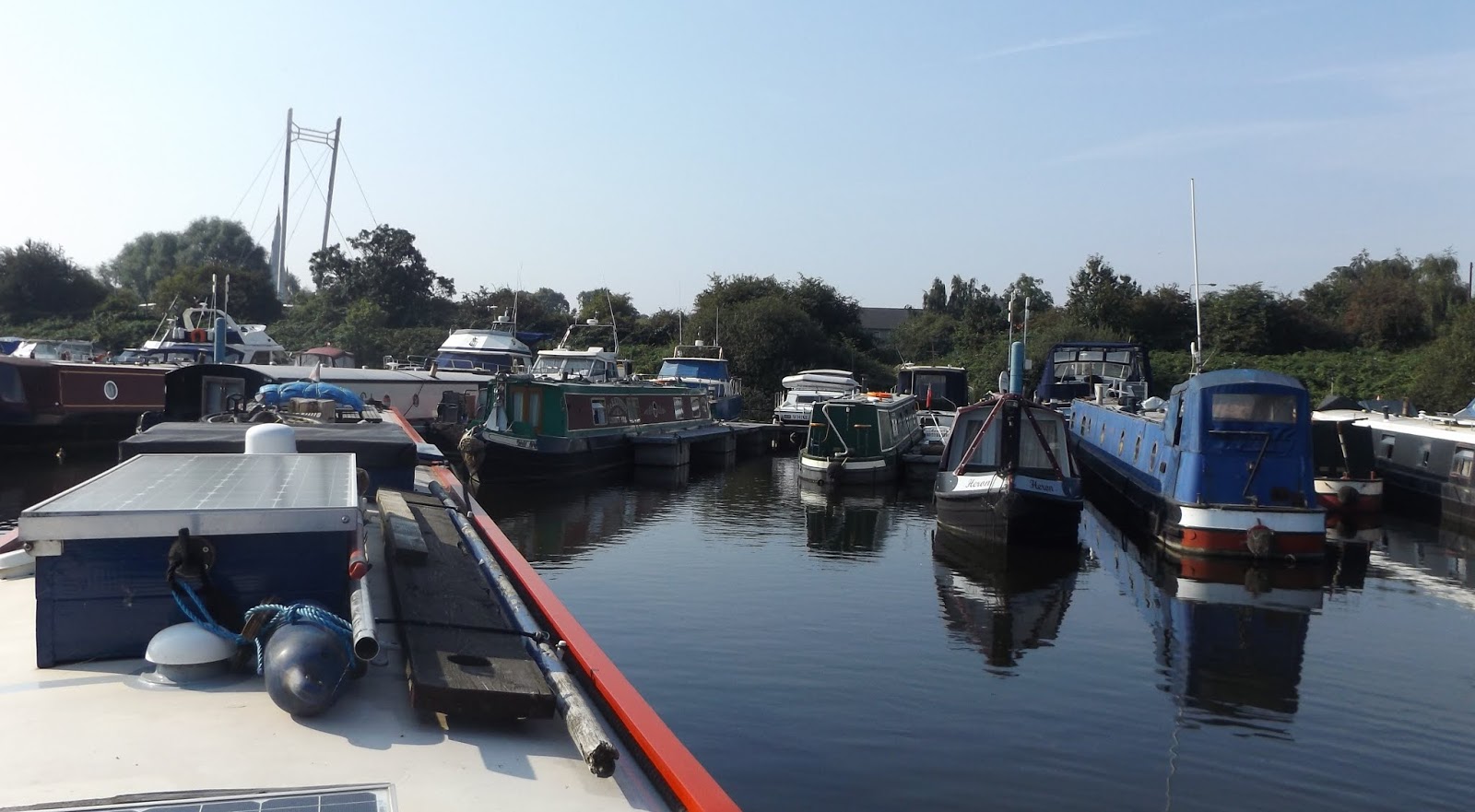With our trip back upriver put back, Dave and Barbara came down to the marina to see us off.

So, this morning, in bright sunshine, we reversed out of A29 and pulled back out onto the navigation.

Newark Bridge, with Newark Castle rising beyond.

The west wall is the only mainly-intact section of the 12th-century castle. Henry I gave Alexander, Bishop of Lincoln, permission to build a castle here in around 1135. Originally of wood, it was replaced by a stone construction at the end of the century.
King John died here in October 1216 of what it is believed to be dysentery. He’d had a tough couple of years. An unpopular monarch, he was forced into signing the Magna Carta in June 1215 by a group of disaffected barons, a document which limited his regnal powers and that he later had declared void by the Pope.
Then followed a campaign which ranged from Rochester in the south to above Berwick in the north as he attempted to control the rebellious barons. It all started to go wrong when the barons brought in Prince Louis of France giving them access to more troops, and naval and siege equipment. John had to head south again, being reactive to the rebels as they attacked towns in East Anglia. In Kings Lynn he fell ill but continued on to Newark, losing part of his baggage train in the tidal mudflats around The Wash on the way, and died here.
I’d rung through to the lockie at Newark Town Lock so it was ready for us as we arrived, and we gently rose up the seven feet to the level of the river.

Warehouses and wharves lined the Newark Dyke, some still remain.


Half an hour after leaving the lock we popped out of the Dyke and back onto the wide river at Averham Weir.

Cormorant panting in the hot sun.

Getting the harvest in before the rain comes…

It was a lot quieter on the river than we expected, the lockie at Newark said it was a bit manic yesterday, so that leaky tank probably did us a favour!
There was space on the visitor moorings at both Farndon and Fiskerton, although to get on at Fiskerton would have required shifting the four canoes right in the middle of the pontoon!

Heading towards Hazleford Lock the rising ground on the left was the scene of more conflict, this time a couple of hundred years later.
The Wars of the Roses between the houses of Lancaster and York over who should be in charge had been going on for about 30 years when the Yorkist King Richard III was killed at Bosworth Field and the Tudor Henry VII assumed the throne with unseemly haste. This should have been the end of it, but York’s supporters waged a series of minor skirmishes against the incumbent king which culminated in a set-piece battle at East Stoke, just a quarter mile from the river, on the Roman Fosse Way.
An 8,000 strong army, led by the Earl of Lincoln and Viscount Lovell, had crossed from Ireland on the 4th of June 1487, marched through Yorkshire and crossed the Trent, somewhere near Fiskerton. Here, on the 16th of June and south of the river, they met the vanguard of Henry’s forces, under the Earl of Oxford. Oxford was a seasoned campaigner and veteran of Bosworth Field, and although outnumbered, held the rebel troops up for around 3 hours until the king’s main forces arrived. The battle swiftly turned against Lincoln and Lovell, and quickly became a rout.
Estimates of casualties vary between 4,000 and 7,000, the majority of them rebels. Almost all of the rebel commanders died, and this ended any chance of re-establishing the Yorkist Crown. The Plantagenet Dynasty had ruled for 350 years through 14 kings, the Tudors were now firmly established and would hold power until the death of Elizabeth I in 1603.
We swung around the last corner above Hazleford Lock and were delighted to see the low-level moorings here empty.

I love it when a plan comes together…
We pulled in at around twenty past twelve after an enjoyable but very warm trip.

Meg was straight off and lying on cool concrete at the top of the steps.

She’s quite a bit better, a combination of the antibiotics and switching back to steroids instead of anti-inflammatories seems to be doing her good.
Tomorrow we’ll push on, hoping for mooring at Gunthorpe but prepared to go to Stoke if we need to.
Locks 1, miles 9

No comments:
Post a Comment